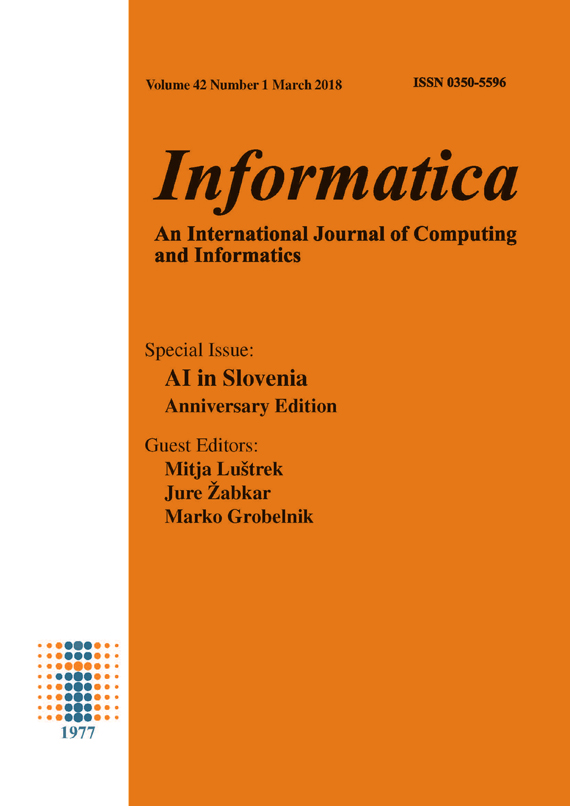Microscopic Evaluation of Extended Car-following Model in Multi-lane Roads
Abstract
This paper describes a micro-simulation model which combined car following with lane change model. For that, we proposed a new car-following model which is an extended of velocity-separation difference model (VSDM) by introducing a new optimal velocity function, named a modified velocity-separation difference model (MVSDM) which react better in braking case. The problems of collision in urgent braking case existing in the previous models were solved. Furthermore, the simulation results show that (MVSDM) can exactly describe the driver’s behavior under braking case, where no collision occurs.References
Aghabayk, K., Sarvi, M., Young, W. (2015) A State-of the-Art Review of CarFollowing Models with Particular Considerations of Heavy Vehicles. Transport Reviews. 35(1), pp. 82-105. DOI: 10.1080/01441647.2014.997323.
Bando, M., Hasebe, K., Nakayama, A., Shibata, A., Sugiyama, Y. (1995) Dynamical model of traffic congestion and numerical simulation. Physical Review E. 51(2), pp. 1035-1042. DOI: 10.1103/physreve.51.1035.
Behbahani, H., Nadimi, N., Alenoori, H.,Sayadi, M. (2014) Developing a New Surrogate Safety Indicator Based on Motion Equations. PROMET - Traffic and Transportation, 26(5).DOI:10.7307/ptt.v26i5.1388.
Bellomo, N., Dogbe, C. (2011) On the Modeling of Traffic and Crowds: A Survey of Models, Speculations, and Perspectives.
SIAM Review. 53(3), pp. 409-463. DOI: 10.1137/090746677.
Brackstone, M., McDonald, M. (1999) Carfollowing: a historical review. Transportation Research Part F: Traffic Psychology and Behaviour. 2(4), pp. 181-196. DOI: 10.1016/s1369-8478(00)00005-x.
Caprani, C. C., Enright, B., Carey, C.(2012) Lane changing control to reduce traffic load effect on long-span bridges. F. Biondini,
D.M. Frangopol, Eds, 6th International Conference on Bridge Maintenance, Safety and Management, Stresa, Italy. Taylor and Francis.
Darbha, S., Rajagopal, K., Tyagi, V. (2008) A review of mathematical models for the flow of traffic and some recent results. Nonlinear Analysis: Theory, Methods and Applications. 69(3), pp. 950-970. DOI: 10.1016/j.na.2008.02.123.
Hayward, J.C. (1972) Near miss determination through use of a scale of danger (traffic records 384). Highway Research Board,
Washington,DC.
Helbing, D., Tilch, B. (1998) Generalized force model of traffic dynamics. Physical Review E. 58, pp. 133-138. DOI: 10.1103/physreve.58.133.
Hoogendoorn, S., Bovy, P. (2001) State-ofthe-art of vehicular traffic flow modelling. Proceedings of the Institution of Mechanical
Engineers, Part I: Journal of Systems and Control Engineering. 215(4), pp. 283- 303. DOI: 10.1177/095965180121500402.
Jiang, R., Wu, Q., Zhu, Z. (2001) Full velocity difference model for a carfollowing theory. Physical Review E. 64(1). DOI:
1103/physreve.64.017101.
Kesting, A., Treiber, M., Helbing, D.(2007) General LaneChanging Model MOBIL for Car-Following Models. Transportation Research Record: Journal of the Transportation Research Board, 1999, pp.86-
DOI:http://dx.doi.org/10.3141/1999-10.
Lazar, H., Rhoulami, K., Rahmani, M. D. (2016) A Review Analysis of Optimal Velocity Models. Periodica Polytechnica Transportation Engineering, 44(2), pp.123-131. DOI : 10.3311/pptr.8753.
Zhi-Peng, L., Yun-Cai, L. (2006) A velocitydifference-separation model for car-following theory. Chinese Physics. 15(7), pp. 1570-
DOI: 10.1088/1009-1963/15/7/032.
Mammar, S., Mammar, S., Haj-Salem, H. (2005) A Modified Optimal Velocity Model for vehicle following. IFAC Proceedings Volumes, 38(1), pp.120-125.DOI:10.3182/20050703-6-cz-1902.02043.
Minderhoud, M., Bovy, P. (2001) Extended time-to-collision measures for road traffic safety assessment. Accident Analysis and Prevention, 33(1), pp.89- 97.DOI:10.1016/s0001-4575(00)00019-1.
Orosz, G., Wilson, R., Stepan, G. (2010) Traffic jams: dynamics and control. Philosophical Transactions of the Royal Society A: Mathematical, Physical and Engineering Sciences. 368(1928), pp. 4455-4479. DOI: 10.1098/rsta.2010.0205.
Papageorgiou, M. (1998) Some remarks on macroscopic traffic flow modelling. Transportation Research Part A: Policy and Practice. 32(5), pp. 323-329. DOI: 10.1016/s0965-8564(97)00048-7.
Treiber, M. and Kesting, A. (2010) An Open-Source Microscopic Traffic Simulator. IEEE Intelligent Transportation Systems Magazine, 2(3), pp.6-320.DOI:10.1109/mits.2010.939208.
Vogel, K. (2003) A comparison of headway and time to collision as safety indicators. Accident Analysis and Prevention, 35(3), pp.427-433.DOI:10.1016/s0001-4575(02)00022-2.
Wilson, R., Ward, J. (2011) Car-following models: fifty years of linear stability analysisa mathematical perspective. Transportation
Planning and Technology. 34(1), pp. 3-18. DOI: 10.1080/03081060.2011.530826.
Xu, R. G. (2015) Multiple traffic jams in full velocity difference model with reaction-time delay. Int j simul model. 14(2), pp. 325-334. DOI: 10.2507/IJSIMM14(2)CO7.
Downloads
Published
Issue
Section
License
I assign to Informatica, An International Journal of Computing and Informatics ("Journal") the copyright in the manuscript identified above and any additional material (figures, tables, illustrations, software or other information intended for publication) submitted as part of or as a supplement to the manuscript ("Paper") in all forms and media throughout the world, in all languages, for the full term of copyright, effective when and if the article is accepted for publication. This transfer includes the right to reproduce and/or to distribute the Paper to other journals or digital libraries in electronic and online forms and systems.
I understand that I retain the rights to use the pre-prints, off-prints, accepted manuscript and published journal Paper for personal use, scholarly purposes and internal institutional use.
In certain cases, I can ask for retaining the publishing rights of the Paper. The Journal can permit or deny the request for publishing rights, to which I fully agree.
I declare that the submitted Paper is original, has been written by the stated authors and has not been published elsewhere nor is currently being considered for publication by any other journal and will not be submitted for such review while under review by this Journal. The Paper contains no material that violates proprietary rights of any other person or entity. I have obtained written permission from copyright owners for any excerpts from copyrighted works that are included and have credited the sources in my article. I have informed the co-author(s) of the terms of this publishing agreement.
Copyright © Slovenian Society Informatika








